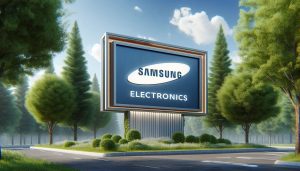Your SAP HANA Cheat Sheet: Milestones, Terms and More
![]() SAP Sapphire Now 2012 officially kicks off today, and we expect a few product reveals and HANA-related updates to be unveiled during the conference. We’ll have live event coverage, analysis and executive interviews throughout SAPphire Now, which you can see here. But before the conference gets into full swing, here’s a HANA cheat sheet to reference as SAP further defines its strategy around the social, mobile in-memory analytics platform.
SAP Sapphire Now 2012 officially kicks off today, and we expect a few product reveals and HANA-related updates to be unveiled during the conference. We’ll have live event coverage, analysis and executive interviews throughout SAPphire Now, which you can see here. But before the conference gets into full swing, here’s a HANA cheat sheet to reference as SAP further defines its strategy around the social, mobile in-memory analytics platform.
SAP HANA
First of all, HANA is not an acronym, it is a name. It doesn’t refer to Hasso’s New Architecture, pertaining to Hasso Plattner, SAP’s founder, nor does it stand for High Performance ANalytic Appliance. HANA is just…HANA.
SAP HANA is SAP AG’s implementation of in-memory database technology, and is the synthesis of three technologies: the search engine TREX, the in-memory light-weight online transaction processing (OLTP) RDBMS technology with row-based data store P*Time, which came from the acquisition of Transact in Memory, Inc. by SAP in 2005, and MaxDB which came from the collaboration of MySQL AB and SAP.
SAP HANA has four components:
- SAP HANA DB (or HANA DB) refers to the database technology itself;
- SAP HANA Studio refers to the suite of tools provided by SAP for modeling;
- SAP HANA Appliance refers to HANA DB as delivered on partner certified hardware as an appliance. It also includes the modeling tools from HANA Studio as well replication and data transformation tools to move data into HANA DB; and
- SAP HANA Application Cloud refers to the cloud based infrastructure for delivery of applications (typically existing SAP applications rewritten to run on HANA).
SAP HANA versions
![]() SAP HANA was officially launched in November 2010 and since then, SAP has already released four versions: the original SP0, followed by SP1 which focused on operational data mart – the access layer of the data warehouse environment that is used to get data out to the users, SP2 wherein more data mart functions were added, SP3/HANA 1.5/Project Orange which focused on HANA as the underlying database under Business Warehouse (BW). The fifth version, SP4, is expected to be released this year, and is focused on resolving a variety of stability issues, as well as adding more features for BW.
SAP HANA was officially launched in November 2010 and since then, SAP has already released four versions: the original SP0, followed by SP1 which focused on operational data mart – the access layer of the data warehouse environment that is used to get data out to the users, SP2 wherein more data mart functions were added, SP3/HANA 1.5/Project Orange which focused on HANA as the underlying database under Business Warehouse (BW). The fifth version, SP4, is expected to be released this year, and is focused on resolving a variety of stability issues, as well as adding more features for BW.
Why use HANA?
As the technology age looms on, companies are faced with the problem of big data, or datasets that exceed the abilities of traditional tools. Datasets typically reach terabytes, petabytes, or even zettabytes in size, and SAP knew that providing solutions for big data storage is quite expensive. So they created HANA to provide low-cost solution for big data challenges.
When HANA was launched, it came with 1TB of RAM, able to support up to 5TB of uncompressed data. And in 2011, HANA had 8TB of RAM with support up to 40TB of uncompressed data.
HANA Developments
Since SAP HANA was launched, it has been incorporated in a lot of other products and innovations. Let’s look at some of the developments in SAP HANA in 2011.
Fujitsu, a leading provider of ICT-based business solutions, was the first vendor to offer a validated platform to run SAP HANA, and provides the best advantage of using the high-end technology with easy administration for customers.
Hewlett-Packard’s HP ProLiant DL980 G7 and HP ProLiant DL580 G7 systems were among the first servers to be certified for running SAP HANA.
SAP HANA became available on the Cisco Unified Computing System (UCS) server platform for customers in Malaysia.
SAP HANA became globally available.
SAP and Dell Inc. partnered to improve their relationship around databases and cloud computing services and Dell became one of the certified vendors that sells HANA.
SAP announced the SAP BusinessObjects Business Intelligence (BI) OnDemand which is powered by HANA.Hitachi Data Systems got a part of its converged infrastructure solutions portfolio certified to run SAP HANA.
In April, SAP HANA announced a $155 million fund for startups which is managed by SAP Ventures and called the SAP HANA Real-Time Fund.
A message from John Furrier, co-founder of SiliconANGLE:
Your vote of support is important to us and it helps us keep the content FREE.
One click below supports our mission to provide free, deep, and relevant content.
Join our community on YouTube
Join the community that includes more than 15,000 #CubeAlumni experts, including Amazon.com CEO Andy Jassy, Dell Technologies founder and CEO Michael Dell, Intel CEO Pat Gelsinger, and many more luminaries and experts.
THANK YOU













